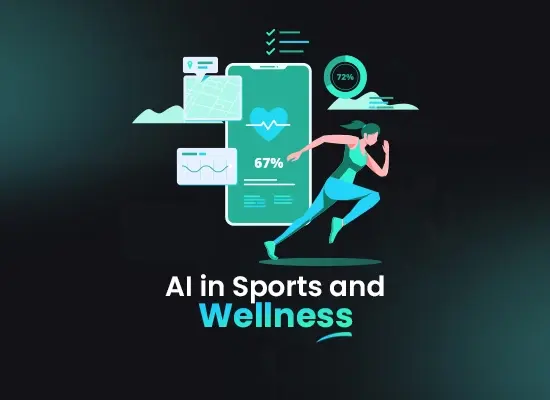What is Stem Education? The Role of AI in STEM Education for Student Success

What is STEM Education?
STEM education, an acronym for science, technology, engineering, and mathematics, encompasses an interdisciplinary approach to learning. This innovative method integrates academic concepts with real-world applications, enabling students to bridge the gap between theoretical knowledge and practical insights. In essence, STEM education encourages students to apply scientific, technological, engineering, and mathematical principles in contexts that establish meaningful connections between the classroom and the world around them.
What is STEM education? It is an educational framework that goes beyond traditional teaching methods by fostering project-based learning in the classroom. Through this approach, students engage in hands-on projects and activities that incorporate technology, emphasising the practical application of science. STEM education, as outlined by the Next Generation Science Standards, strives to enhance students’ comprehension and application of scientific principles, preparing them for the challenges they will face in future classes.
Delving into the benefits of STEM education, it is evident that this approach not only enhances academic learning but also equips students with essential skills for the future. The emphasis on project-based learning cultivates problem-solving abilities and critical thinking skills. Students are not merely memorising facts; they are actively involved in applying their knowledge to solve real-world problems, thereby gaining a deeper understanding of STEM concepts.
An integral aspect of STEM education is its relevance to the development and utilisation of predictive analysis tools. In the ever-evolving landscape of technology, predictive analysis software plays a crucial role. By incorporating STEM principles into education, students become familiar with the tools and methodologies employed in predictive analysis. This exposure prepares them for the dynamic nature of the workforce, where proficiency in predictive analysis tools is highly valued.
Why STEM education is important? The answer lies in its capacity to equip students with the skills necessary for success in a rapidly changing world. STEM education not only addresses the current demands of the job market but also anticipates future needs. The integration of predictive analysis tools into the curriculum ensures that students are well-prepared for industries that heavily rely on data-driven decision-making processes.
Why STEM Education Is Important?
Why stem education is important? STEM education is vital due to its direct correlation with societal advancements in technology and science. The National Science Foundation emphasises that students need a solid grounding in STEM subjects to thrive in the current information-driven age. The significance of STEM education is underscored by its role in fostering creativity and honing critical thinking skills in students. This empowerment is crucial for navigating the complexities of a technologically evolving world.
What are the benefits of STEM education? The benefits of STEM education extend across all age groups and backgrounds. Recent initiatives have been implemented to encourage greater participation of women and minorities in STEM fields. STEM education and the application of technology enable every student to harness their creativity and enhance their critical thinking skills. This holistic approach equips individuals with the tools necessary to adapt to the challenges of an increasingly technological society.
Why is predictive analysis software essential in STEM education? Predictive analysis tools play a pivotal role in STEM education, aiding students in understanding complex concepts and making informed decisions. The integration of predictive analysis software facilitates a more interactive and engaging learning environment. This technological component not only enhances comprehension but also prepares students for the real-world application of STEM principles.
One of the key aspects of what is STEM education is its focus on practical applications. The benefits of STEM education extend beyond traditional classroom settings, allowing students to develop skills that are applicable in real-world scenarios. For students with ADHD, this approach provides a dynamic learning environment that caters to their need for engagement and hands-on experiences.
In STEM education, predictive analysis tools play a crucial role. These tools are utilised to forecast trends and make informed decisions based on data analysis. Students, including those with ADHD, can gain valuable exposure to predictive analysis software through STEM education. This exposure not only enhances their technological proficiency but also prepares them for a future where data-driven decision-making is increasingly important.
Understanding why STEM education is important involves recognising its contribution to shaping well-rounded individuals equipped with essential skills for the modern world. The hands-on nature of STEM activities fosters creativity, problem-solving, and critical thinking—attributes that are highly valuable for students with ADHD. The inclusive nature of STEM education ensures that diverse learning styles are accommodated, allowing all students to thrive.
Seamless Collaboration | Cost-Efficient Solutions | Faster Time-to-Market

What is Predictive Analysis?
Predictive analysis is a cutting-edge field that leverages sophisticated tools and software to extract meaningful insights from data, allowing organisations to anticipate future trends and behaviours. At its core, predictive analysis involves the use of statistical algorithms and machine learning models to analyse historical data and make predictions about future events. The significance of predictive analysis tools and software lies in their ability to empower businesses, researchers, and decision-makers with actionable intelligence, aiding them in making informed decisions and gaining a competitive edge in their respective domains.
Predictive analysis tools encompass a variety of techniques, including data mining, statistical modelling, and machine learning algorithms. These tools are designed to sift through large datasets, identifying patterns and correlations that might go unnoticed through traditional analysis methods. By utilising predictive analysis software, organisations can uncover hidden insights and trends, enabling them to make more accurate forecasts about future events. These tools play a pivotal role in transforming raw data into actionable knowledge, providing a strategic advantage for businesses seeking to stay ahead in today’s dynamic and fast-paced environment.
One of the primary reasons predictive analysis tools are crucial is their ability to enhance decision-making processes. By analysing historical data and identifying patterns, organisations can make more informed and strategic decisions, minimising risks and maximising opportunities. For instance, businesses can use predictive analysis to forecast market trends, optimise supply chain operations, and identify potential customer behaviours. This proactive approach allows organisations to allocate resources more efficiently, resulting in cost savings and improved overall performance.
Predictive analysis software has become increasingly important in various industries, including finance, healthcare, marketing, and manufacturing. In finance, for example, predictive analysis tools can be employed to forecast stock market trends, manage investment portfolios, and identify potential fraud. In healthcare, these tools aid in predicting patient outcomes, optimising treatment plans, and improving overall patient care. In marketing, predictive analysis is utilised to understand consumer behaviour, personalise marketing campaigns, and increase the effectiveness of targeted advertisements. The applications of predictive analysis tools are diverse, making them indispensable for organisations seeking a data-driven approach to decision-making.
Significance of Predictive Analysis Tools and Predictive Analysis Software:
The efficiency and accuracy of predictive analysis tools contribute significantly to strategic planning. By leveraging historical data, organisations can identify trends and patterns that help in anticipating future market conditions. This foresight allows businesses to adapt their strategies, stay ahead of competitors, and capitalise on emerging opportunities. In an era where rapid technological advancements and evolving consumer preferences drive market dynamics, the ability to predict trends is a key differentiator for businesses aiming for sustained success.
Predictive analysis software also plays a crucial role in risk management. By identifying potential risks and uncertainties, organisations can implement proactive measures to mitigate adverse effects. For instance, in the insurance industry, predictive analysis tools can assess various factors to predict the likelihood of claims, enabling insurers to set appropriate premiums and manage their risk portfolios effectively. Similarly, in supply chain management, these tools can forecast potential disruptions, allowing businesses to implement contingency plans and maintain operational resilience.
The growing importance of predictive analysis tools is evident in their contribution to optimising resource allocation. By accurately predicting demand, organisations can streamline their production processes, reduce excess inventory, and minimise waste. In the realm of human resources, predictive analysis tools aid in workforce planning by forecasting staffing needs based on historical data, employee performance, and market trends. This optimisation of resources not only enhances operational efficiency but also contributes to sustainability efforts by reducing unnecessary consumption and waste
Furthermore, predictive analysis tools are instrumental in customer relationship management. By analysing customer behaviour and preferences, businesses can tailor their products and services to meet specific needs, leading to increased customer satisfaction and loyalty. E-commerce platforms, for instance, utilise predictive analysis to recommend products based on individual browsing and purchasing histories, enhancing the overall shopping experience. In this way, predictive analysis software becomes a valuable asset for businesses aiming to build strong and lasting relationships with their customer base.
STEM Education in School:
Introducing STEM education into the classroom can be accomplished through various methods. A helpful resource for educators is a sample STEM lesson plan that serves as a step-by-step guide for introducing this concept to students. The plan incorporates a video lesson and encourages students to create their own STEM lessons, fostering engagement and hands-on learning.
Once teachers have introduced STEM education, they should assess their classroom setup to determine how to seamlessly integrate STEM projects and activities. An effective classroom arrangement is crucial for successful project implementation. Considerations include configuring desks and furniture to allow maximum flexibility for students during STEM tasks. This may involve creating large aisles or specific workstations tailored to each project. Collaboration is vital in STEM learning, so arranging the classroom to facilitate group work, such as clusters of chairs, is beneficial.
Visual supports, like charts and posters, play a key role in helping students retain essential STEM concepts. For elementary to middle school students, engaging projects like sensory water bottles, a bridge-building challenge, or creating a volcano can make STEM learning enjoyable and memorable.
At the high school level, teachers can implement comprehensive STEM projects covering all fields. An example is a water quality survey using underwater robots to collect data. This project offers students the option to design their robots or use purchased kits, demonstrating the diverse applications of STEM education.
The implementation of STEM education goes beyond traditional methods. Predictive analysis tools, including predictive analysis software, can enhance the effectiveness of STEM projects. Educators can leverage these tools to assess student performance, tailor lessons to individual needs, and track progress over time. The benefits of STEM education become evident when such tools are integrated into the learning process, emphasising their importance in preparing students for future challenges.
Seamless Collaboration | Cost-Efficient Solutions | Faster Time-to-Market

Impact of STEM Education:
STEM education, focusing on science, technology, engineering, and mathematics, is integral to the workforce given its evident relevance and impact. A compelling argument for the significance of STEM education lies in its direct correlation with workforce trends. Back in 2018, the Pew Research Centre unveiled a staggering 79% growth in STEM employment since 1990, with a remarkable 338% surge in computer-related jobs during the same period.
Fast forward to the present, and the Bureau of Labour Statistics (BLS) projects an overall 7.7% increase in occupations by 2030. However, the distinction is notable when comparing STEM and non-STEM occupations. Non-STEM fields are anticipated to grow by 7.5%, whereas STEM occupations are expected to experience a more robust 10.5% increase. These statistics vividly underscore the continuing and growing relevance of STEM disciplines in the ever-evolving job market.
The benefits of STEM education become even more apparent when considering salary differentials. The median annual wage across all occupations stands at $41,950. In contrast, those engaged in non-STEM occupations earn $40,020, while their STEM counterparts command a significantly higher median annual wage of $89,780. These figures emphasise not only the financial rewards associated with STEM careers but also the economic value of fostering STEM skills for individuals and society as a whole.
Furthermore, the importance of STEM education extends beyond traditional employment sectors into emerging fields like entrepreneurship. A report by the Information Technology and Innovation Foundation (ITIF) reveals that tech-based startups, often rooted in STEM expertise, offer substantial economic benefits.
These startups pay more than double the national average wage and nearly triple the overall startup wage. Despite constituting only 3.8% of businesses, they wield a substantial influence, capturing 70.1% of business research and development investment, 58.7% of research and development jobs, and 8.1% of total wages, underscoring the pivotal role of STEM education in fostering innovation and economic growth.
In summary, what is STEM education? It is an educational approach cantered on science, technology, engineering, and mathematics, with proven benefits that extend far beyond the classroom. Predictive analysis tools, essential components of STEM fields, demonstrate the increasing demand for STEM skills in the workforce.
Why stem education is important? The continuous growth in STEM employment, the higher earning potential in STEM careers, and the pivotal role of STEM in innovative sectors like entrepreneurship collectively highlight its critical role in shaping the future workforce. As the world becomes increasingly reliant on technology, predictive analysis software and other STEM-related tools will likely continue driving advancements, emphasising the enduring importance of STEM education in preparing individuals for success in a rapidly evolving global economy.
Benefits of Stem Education:
The benefits of STEM education are evident in the surging demand for jobs in STEM fields over the past decade. The job market in STEM has grown at a remarkable rate of 17%, outpacing non-STEM fields at 9.8%. This trend positions STEM as the fastest-growing job market not only in the United States but in advanced economies worldwide. Predictive analysis tools indicate a sustained growth of 8% in STEM jobs in the U.S. between 2019 and 2029, with software development jobs leading the way with a staggering 22% growth rate
Why stem education is important? Stem schools adopt a philosophical approach to education that embraces failure as an integral part of learning. Unlike traditional methods, STEM schools do not penalise children for mistakes but encourage them to try again, fostering innovation as a result. This unique approach recognises the significance of perseverance and learning from failures, essential qualities in fields that reward creativity and problem-solving skills.
Predictive analysis software supports the claim that STEM subjects foster creativity. By combining concepts from various STEM disciplines, students harness their ingenuity to find innovative solutions. STEM schools leverage the belief that creativity is not confined to traditionally labelled “creative” subjects like art and music; rather, it emerges organically through experimentation and practical application in STEM fields.
At STEM schools, learning by doing is a fundamental principle. Students are encouraged to explore and try new things through hands-on projects. This emphasis on practical application ensures that students not only acquire knowledge but can independently apply their skills to create something new, a crucial aspect in STEM fields that highly value innovation.
The prevailing issue with standardised education lies in its inability to accommodate the diverse learning pace of individual students. STEM schools, however, take a different approach. They introduce STEM concepts at the pre-K level, providing students with a solid foundation that sets them on a path to excel throughout their lives. This approach addresses concerns about boredom, social isolation, demotivation, and academic struggles that have plagued traditional education.
Challenges faced by STEM Education:
Lack of teacher training encompasses two things: first, a situation where the person entrusted to teach science or maths has no college experience in these disciplines; and second, a lack of professional development focused on STEM methodology and concepts. Although they can’t always oversee professional development, teachers can enrol in STEM-focused courses and use online resources created especially for STEM educators. You might even think about obtaining a STEM certification.
The requirement for resources is yet another significant barrier for STEM educators. The most important thing is to locate educational materials that cover all four STEM subjects and are made in a way that makes integration easy and seamless. When selecting the greatest STEM curriculum resources, educators should look for resources that promote their own learning as well as offering students the best materials. These resources are known as educational curriculum resources.
- A lack of knowledge on STEM Education, in particular, about the multidisciplinary character of STEM-based courses
- a lack of comprehension of the norms and content in other courses, particularly engineering education, in which they do not major;
- Lack of time, particularly for planning collaboratively, incorporating information from other disciplines, creating STEM curricular activities with other educators, and carrying out STEM teaching and learning activities;
- The effects of traditional examinations; The organisation and structure of schools;
- inadequate instructional supplies and resources.
Conclusion:
In conclusion, STEM education stands out for its innovative and hands-on approach, preparing students for the dynamic challenges of the modern workforce. The benefits of STEM education, as evidenced by predictive analysis tools, position it as a crucial component in shaping the future workforce and fostering creativity and problem-solving skills.
Predictive analysis and the associated tools and software have become indispensable in today’s data-driven landscape. The ability to extract meaningful insights from vast datasets, forecast future trends, and make informed decisions provides organisations with a competitive advantage. Whether in finance, healthcare, marketing, or other industries, the efficiency and accuracy of predictive analysis tools contribute to improved decision-making, risk management, strategic planning, resource optimisation, and customer relationship management.
As technology continues to advance, the role of predictive analysis in shaping the future of business and innovation is likely to become even more pronounced.

Author Bio
Syed Ali Hasan Shah, a content writer at Kodexo Labs with knowledge of data science, cloud computing, AI, machine learning, and cyber security. In an effort to increase awareness of AI’s potential, his engrossing and educational content clarifies technical challenges for a variety of audiences, especially business owners.






